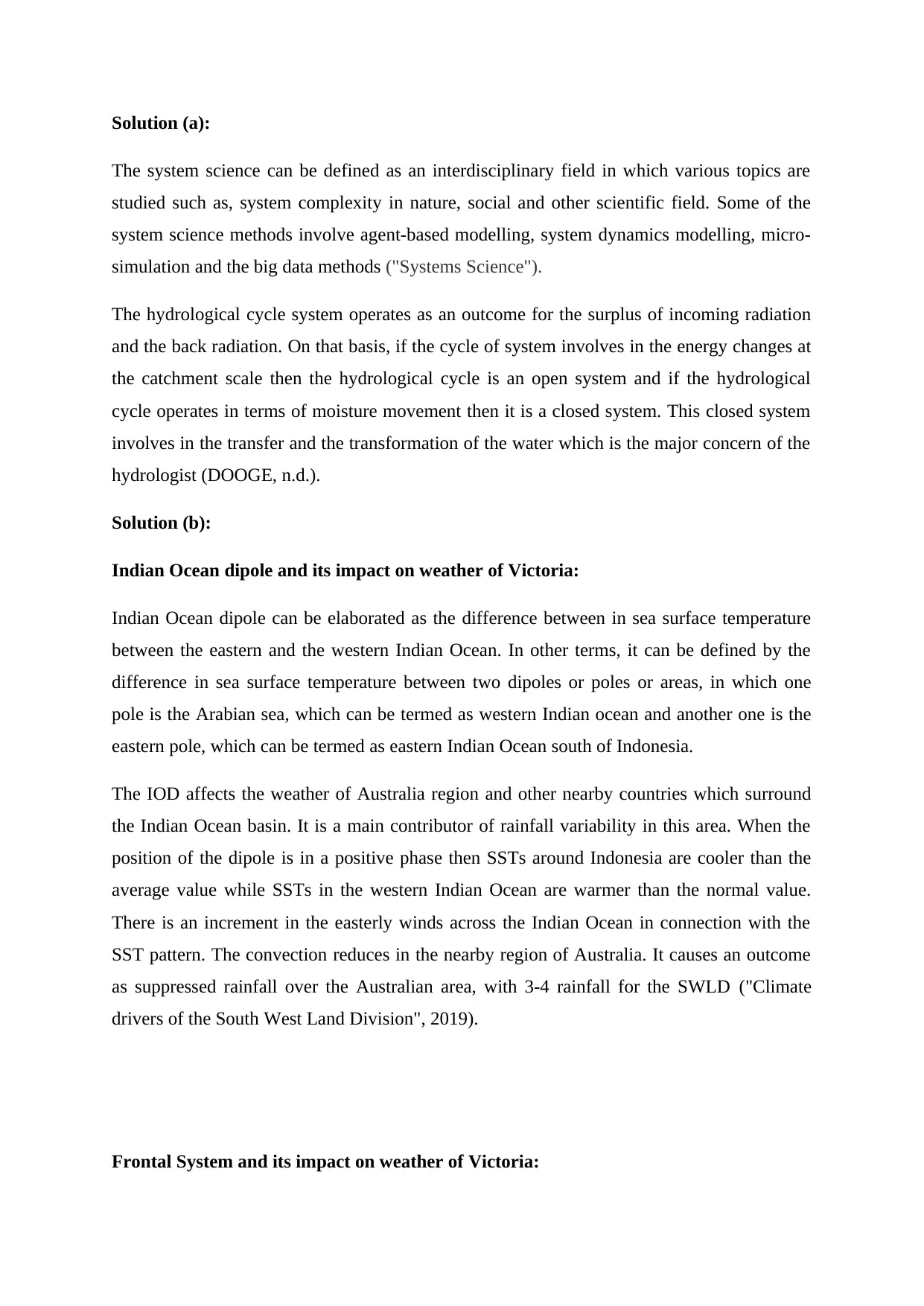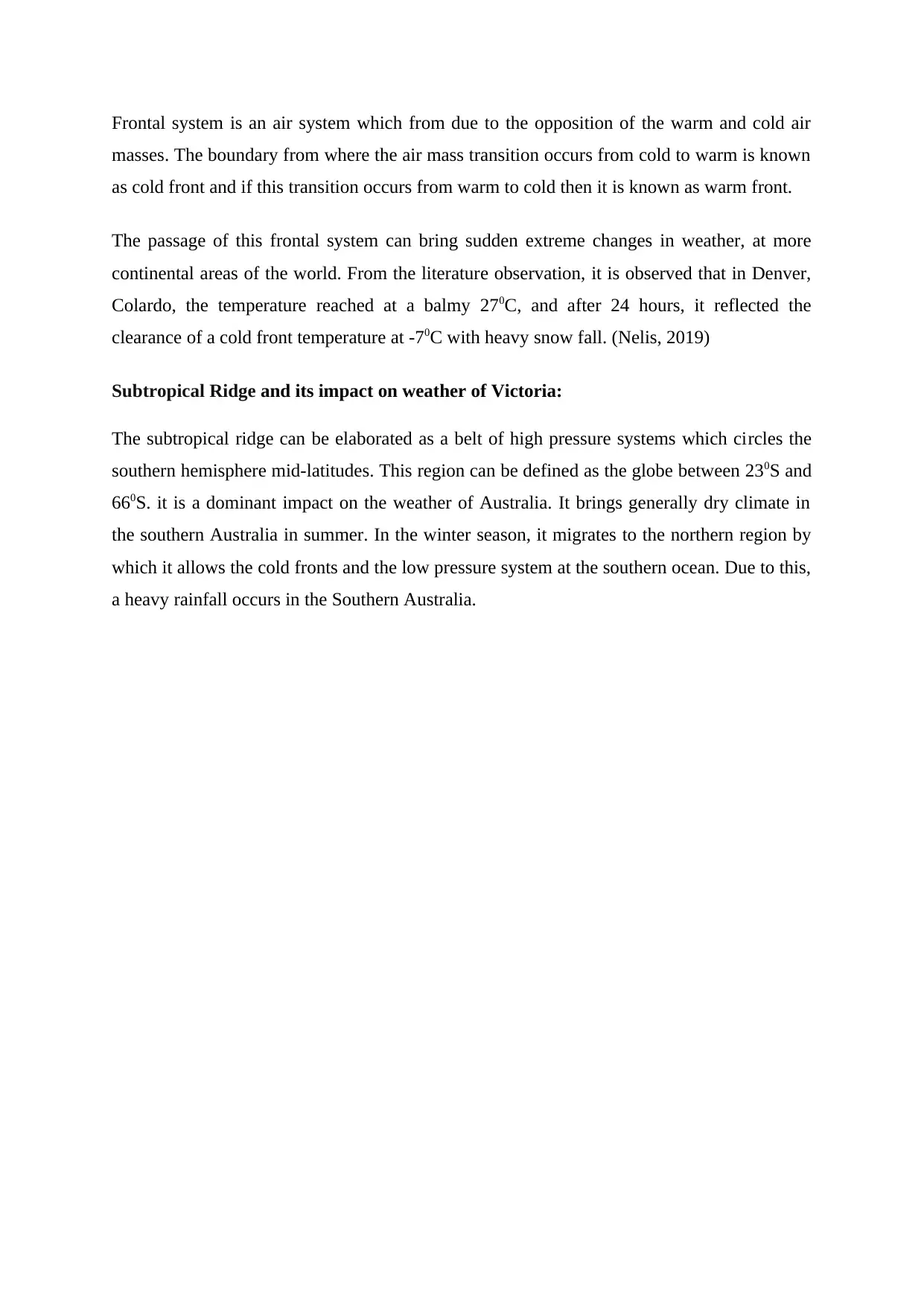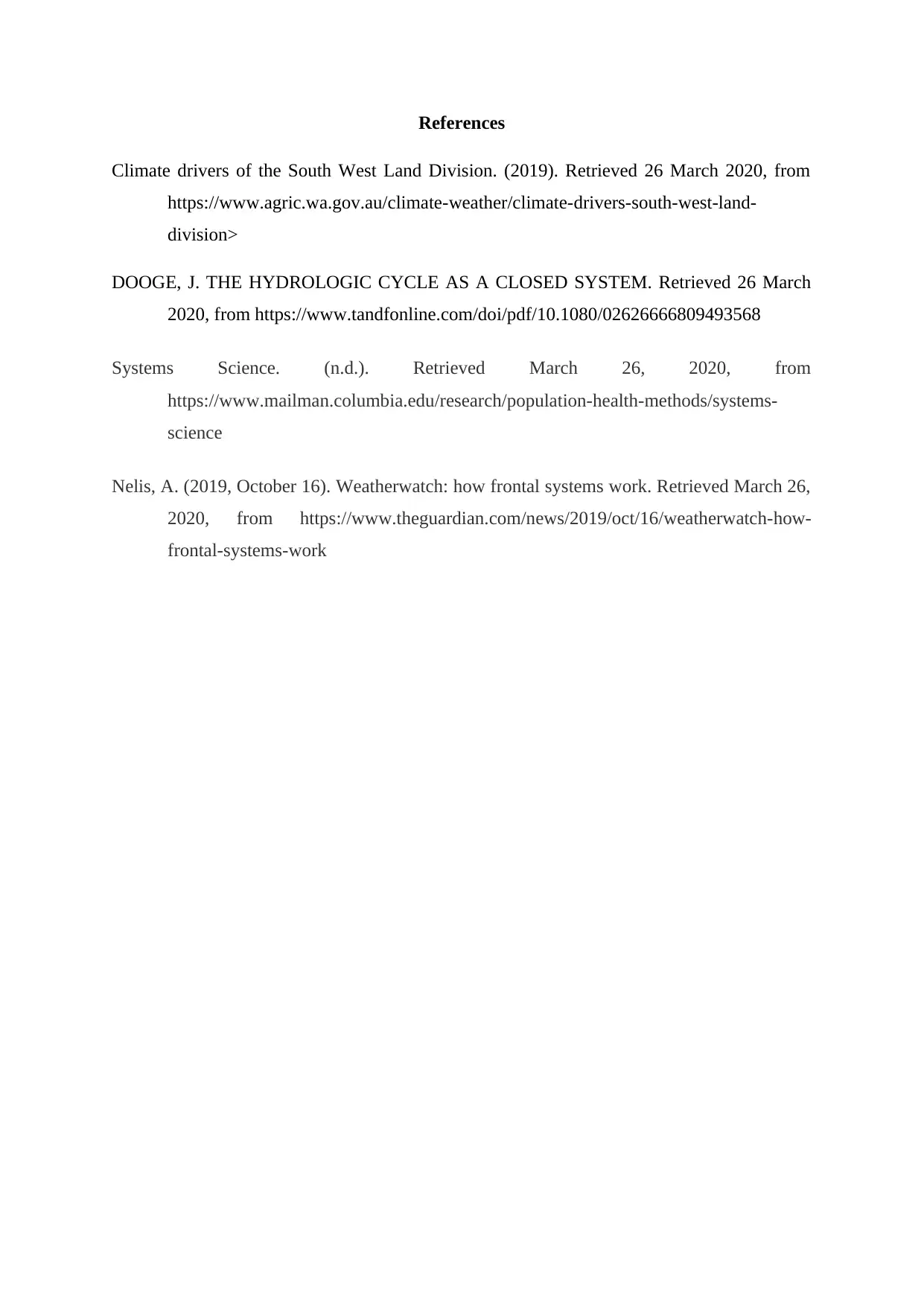ENGIN5201 Surface Water Hydrology Assignment 1: Climate Systems Impact
VerifiedAdded on 2022/08/27
|3
|711
|19
Homework Assignment
AI Summary
This document presents a solution to an ENGIN5201 Surface Water Hydrology assignment. The solution begins by defining system science and explaining why hydrology at the catchment scale can be considered an open system, referencing the hydrological cycle's energy and moisture transfer aspects. It then delves into the influence of climate systems on Victoria's weather, describing the Indian Ocean Dipole (IOD) and its effect on rainfall patterns, the impact of frontal systems characterized by temperature shifts, and the role of the subtropical ridge in influencing seasonal weather variations. The assignment solution is supported by references to relevant literature, providing a comprehensive overview of the topics covered and their practical implications.
1 out of 3







![[object Object]](/_next/static/media/star-bottom.7253800d.svg)